Welcome to the Palace of Scaffolding: the dramedy of Palais de Justice
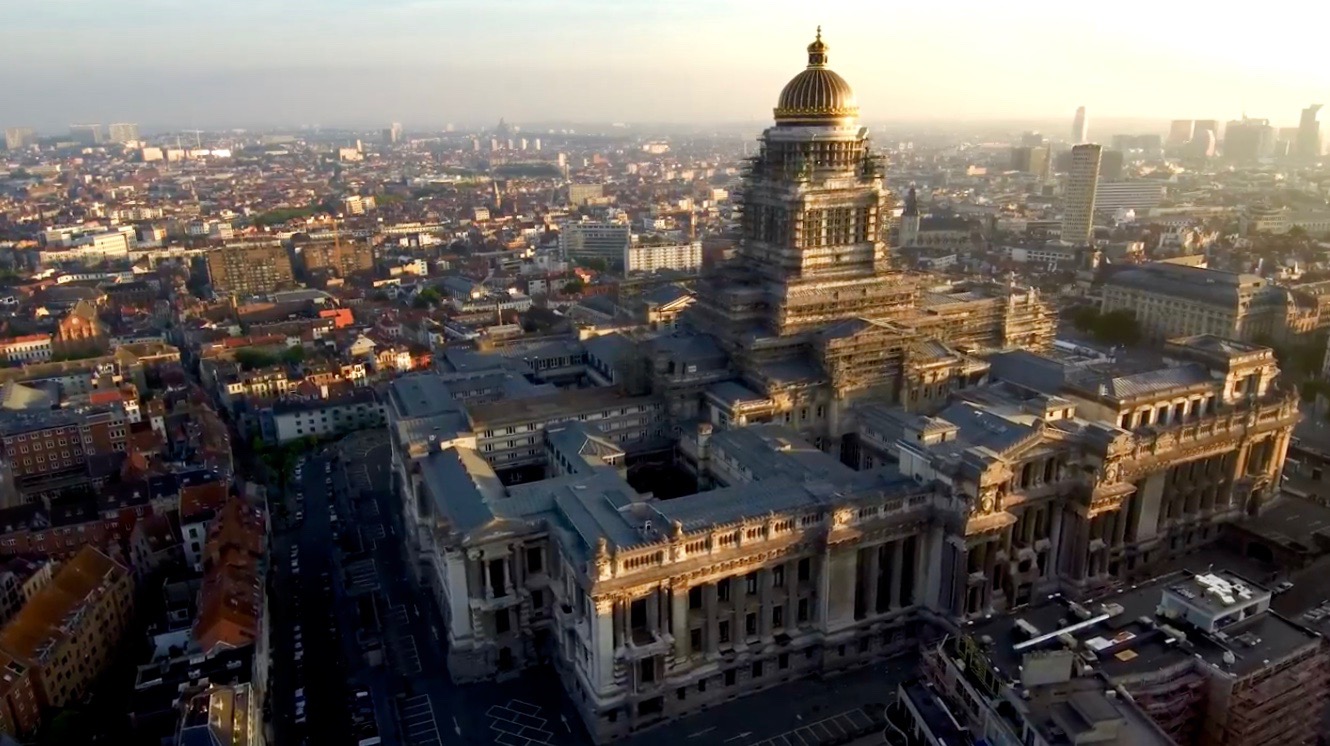
You’ve probably heard the jokes.
“Where can you find the Palace of Scaffolding? Only in Brussels.”
“What crime did the Palace of Justice commit? Why is it behind bars?”
“Tour guide: On the left side, you see the Palais de Justice. It’s a courthouse, not a correctional facility.”
“The Palais de Justice motto: It’s not the outside, but the inside that matters. Don’t judge a book by its cover.”
Alas, Belgium’s most important courthouse has been the butt of jokes for decades. It’s hard not to make fun of a building that deserves a world record for having lasted more than three decades shored up by layers of scaffolding. As another joke goes, the scaffolding seems to be growing its own scaffolding.
Federal judge Luc Hennart quips that the palace scaffolding is much older than his decades-long career in the courthouse. “When I first came here, the scaffolding was already there. I’ve been here since 30 years, and it’s still there,” says the president of the Brussels Court of First Instance.
But it’s often said that beneath every joke hides a sad and painful truth.
And the sad and painful truth about the Palais de Justice is this: an architectural masterpiece from the 19th century recognized as the world’s largest courthouse and the greatest symbol of justice in Belgium – is falling apart. It has become an unsafe place for court employees and visitors. But a real sense of urgency to address the problem seems to be lacking.
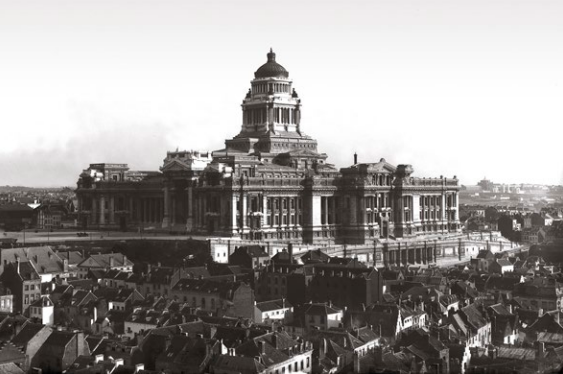
The Palace of Justice was built from 1866 to 1833 during the reign of King Leopold II. The construction cost the government about 45 million Belgian francs. The building designed by architect Joseph Poelaert exhibits a mixture of architectural styles. The whole structure measures 186 meters long, 177 meters wide, and 116 meters high, and covers an area of more than 26,000 square meters encompassing 8 courtyards, 27 large courtrooms, and 245 smaller sections. It houses the Court of First Instance, the Court of Appeals, and the Supreme Court.
Parts of the building were rebuilt after the Germans tried to burn the palace down at the end of World War II. But the troubles of Palais de Justice didn’t end there.
After more than a century of existence, the building’s roof, walls, and floors began to crack and crumble in places. The fungus population started multiplying in nooks and crannies of the courthouse. The palace had become an accident waiting to happen.
Just last week, part of the ceiling above the Supreme Court registry collapsed resulting in two injuries. In October last year, the evidence room had to be locked up after a section of its flooring caved in. Falling stones, leaky ceilings, crashing floors, and mold infestations have in fact become old news to court employees.
Hennart warns, “When you enter the Palais de Justice, you better hope you don’t leave the building in a horizontal way.”
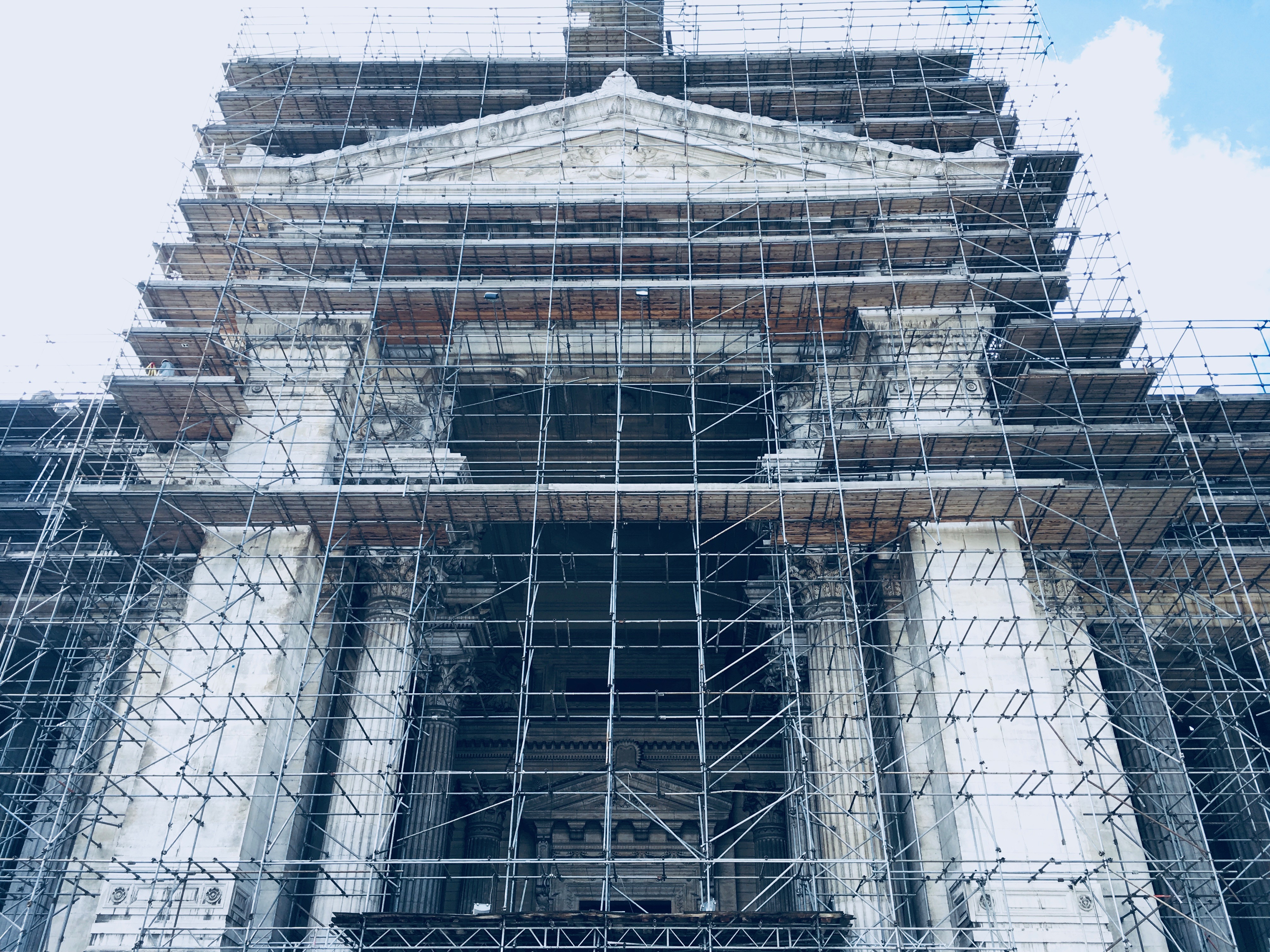
In 1983, the federal government decided to scaffold the building to keep it intact and protect the public from falling fragments. When the scaffolding started to rust and weaken, the government again decided to put another layer of scaffolding in 2010.
“It’s always a band-aid solution. They intervene only to make small repairs when needed, but there is no real action,” laments Hennart who is convinced that the federal government has the budget needed to solve the whole problem. “But they don’t want to give us the money.”
Hennart speculates the federal government has little interest in Brussels’ justice affairs because most of the country’s top government officials come from the Flanders and Wallonia regions of Belgium. “There are new justice buildings in Flanders and Wallonia, but in Brussels, you see the situation. They don’t have the same interest for Brussels than for the French and the Flemish parts of the country,” says Hennart.
But for public prosecutor Marianne Thomas who has been working in the courthouse for more than 20 years, the Palais de Justice controversy is just another symptom of the age-old political conflict between the Flemish and the Francophones. “I think there is more interest for what is in Flanders because the government is mainly in the hands of the Flemish. They are the majority,” says Thomas.
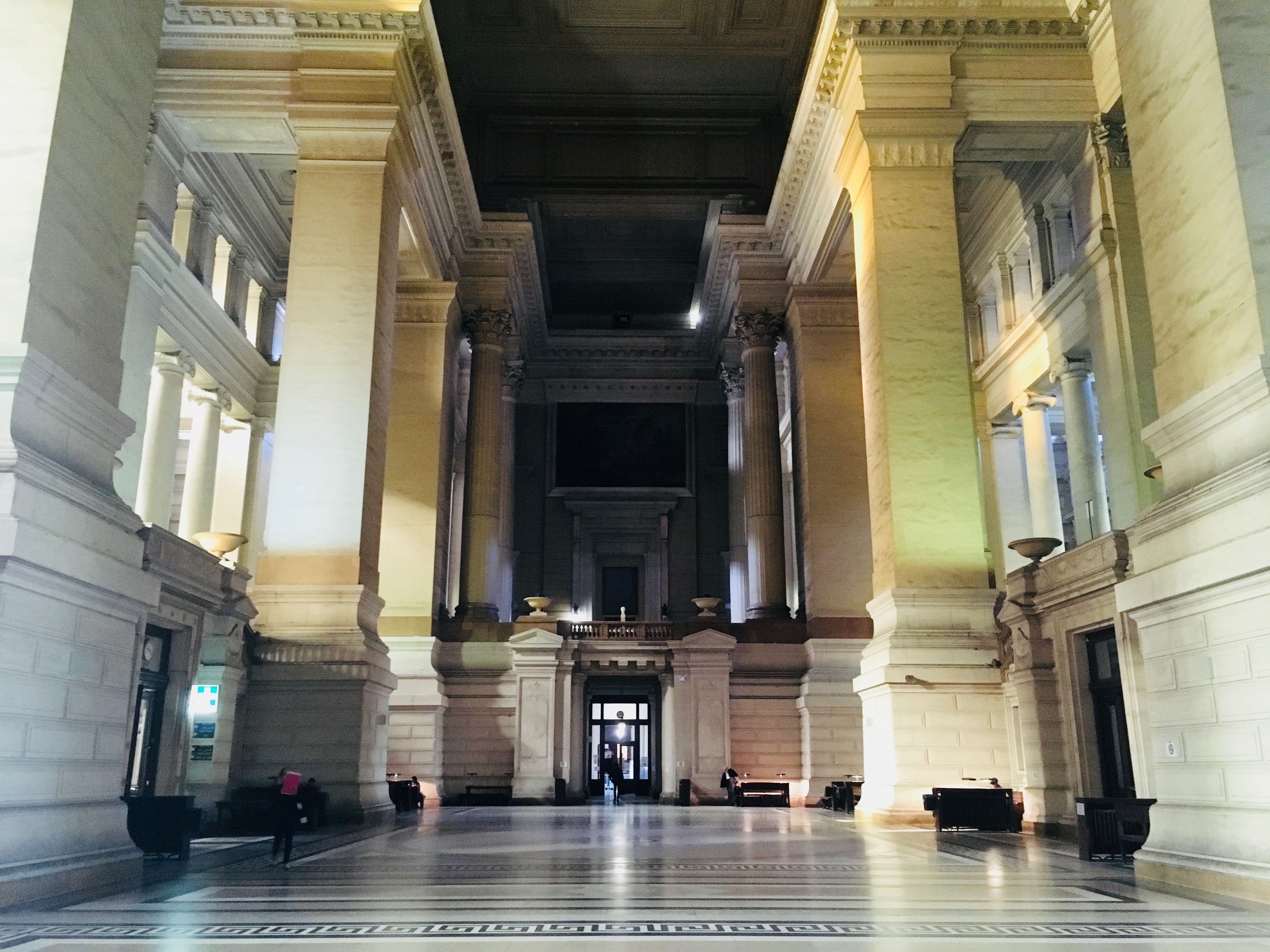
The Palais de Justice is managed by the Régie des Bâtiments or the Buildings Agency, a federal body in charge of preserving national architectural heritage and public buildings. The body is under the supervision of the Ministry of Security and Interior headed by Deputy Prime Minister Jan Jambon.
The Belgian government has time and again expressed its commitment to the rehabilitation of the court building. Last year, the government announced that palace renovations will be done by 2028. But last month, Justice Minister Koen Geens said that the building will not be completely renovated before 2040.
For Hennart, the government is just stalling for time. “I am convinced that in 2040, the scaffolding will still be there. Maybe it will be brand new. But it will still be there,” says Hennart. Although he has lost faith in the government’s pronouncements, the federal judge hasn’t given up on the dream that one day, we will once again behold the Palais de Justice in all its glory. “On y arrivera!” But he adds in jest, “Without the money from the government, maybe let’s just pray for a miracle.”
Perhaps it explains why the jokes abound. Because sometimes it’s the only way to deal with the shame and the tragedy of allowing one of Belgium’s grandest and most glorious monuments to rot away. “When I see what’s happening with the Palais de Justice, I will die. If you don’t have a little bit of humor, there is only one way. Open the window and jump,” jokes Hennart.
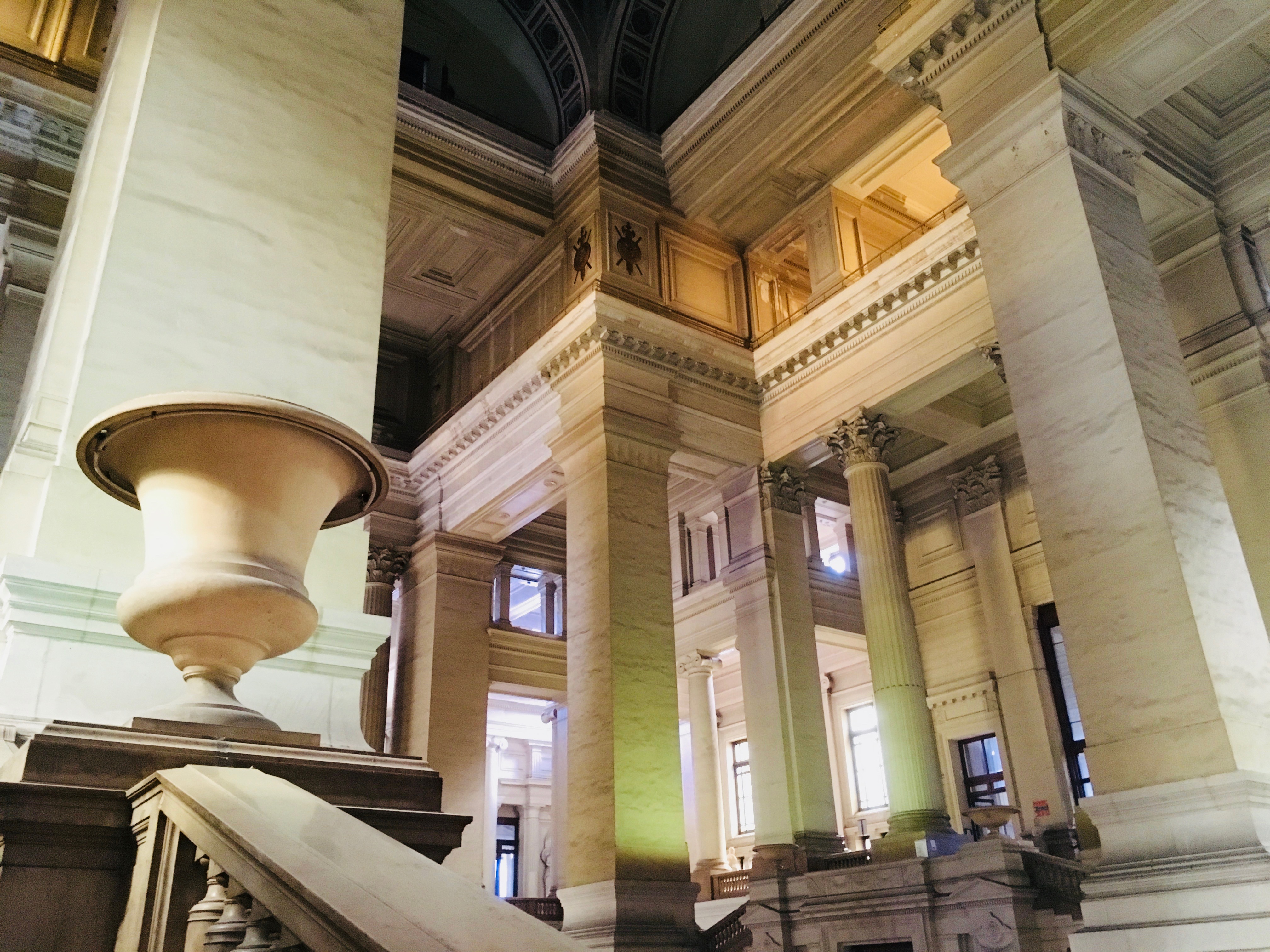
The Palace of Justice doesn’t look like much these days. It hasn’t for a long time now. Not with the scaffolding getting in the way. But have you been inside? Have you seen its mesmerizing halls, passageways, and sculptures? Have you witnessed how the sunlight filters through the windows, basking the interior in a stream of gold? Have you discovered its many hidden architectural treasures? They speak of the regrettable dramedy of Palais de Justice.



